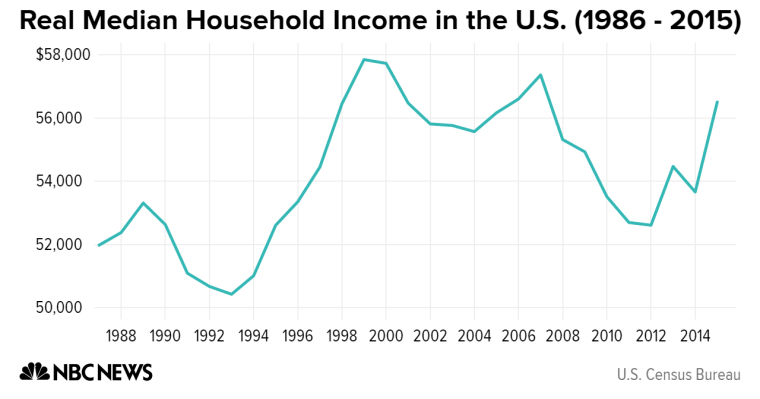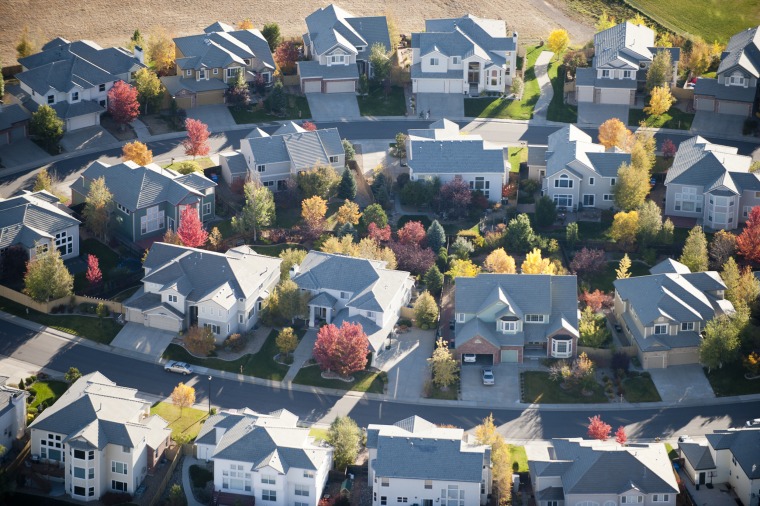The results are in: the United States economy is bouncing back.
A report released by the Census Bureau Tuesday found that Americans of all stripes — the super wealthy, middle class and poor — saw incomes rise last year. Growth came at the fastest annual rate seen in decades.
The head of President Obama’s economic team was so gleeful with the findings that he trumpeted the report as “unambiguously the best” ever.
But would all Americans agree?
Nearly nine years after a devastating recession took hold of the country, many Americans still hold broadly bleak views toward the economy.
Tuesday’s report showed the first real increase in household wages since 2007 — and it may be premature to expect a single strong economic report to suddenly turn years pessimism around.
But that disconnect between the dramatic gains and the public’s perception has been central to Republican presidential nominee’ Donald Trump’s approach, capitalizing on lingering economic anxiety. The government may say the economy is getting better, but Americans aren’t feeling it yet.
The unemployment rate was steadily dropping throughout the primary election, and so Trump instead frequently pointed to another statistic, stagnant household incomes, as the true indicator of economic health.
“Household incomes are down more than $4,000 since the year 2000. That’s 16 years ago,” Trump said during the Republican National Convention in July.
Trump was right, at the time. And though the latest Census report now makes clear that the median household income grew by 5.2 percent from 2014 (adjusted for inflation, it comes to $56,516) incomes are still below times of the economic boon of the late 1990s.
And crucial to Trump’s causes, rural residents, who are more likely to be the Republican candidate’s supporters, were the only sub-category of Americans who did not see incomes rise in 2015.

Still, Justin Wolfers, a professor of economics at the University of Michigan, says Trump’s gloom and doom depiction of the economy doesn’t match the current realities of the recovery.
“There was a period of great economic anxiety. That moment has passed,” Wolfers said.“For sure there are frustrations in the middle class, but it doesn’t seem like the right moment to be pushing that message.”
A crucial takeaway from the report was that economic gains were not isolated to the mega rich. In fact poor Americans, those at the bottom 10th percentile of the income scale, saw the strongest gains, with 7.9 percent growth over the last year.
"The rising tide lifts all boats," Wolfers said. "The income gains were large and they were broadly based. The recovery is finally yielding fruit for the middle and working classes."
There is already a disparity between the types of Americans more likely to view economic conditions as a glass half full, rather than empty.
Latinos, for example, earn on average $11,000 less than the general American public. Their wealth is nearly six times less than that of all other households. They are nearly twice as likely to live in poverty. And yet for Latinos, their outlook on their personal finances are on the rise, and their optimism for their economic future is far greater than the rest.
The paradox, found from a survey released by the Pew Research Center in June, showed the inverse of economic anxiety, a common trend seen with many immigrant groups that tend to look on the bride side of their economic prospects.
“Favored groups are not favored as much as they used to be, so they feel threatened,” Barry Bosworth, an economist with the Brookings Institute. “White, middle-class Americans are much more upset about the trends.”
